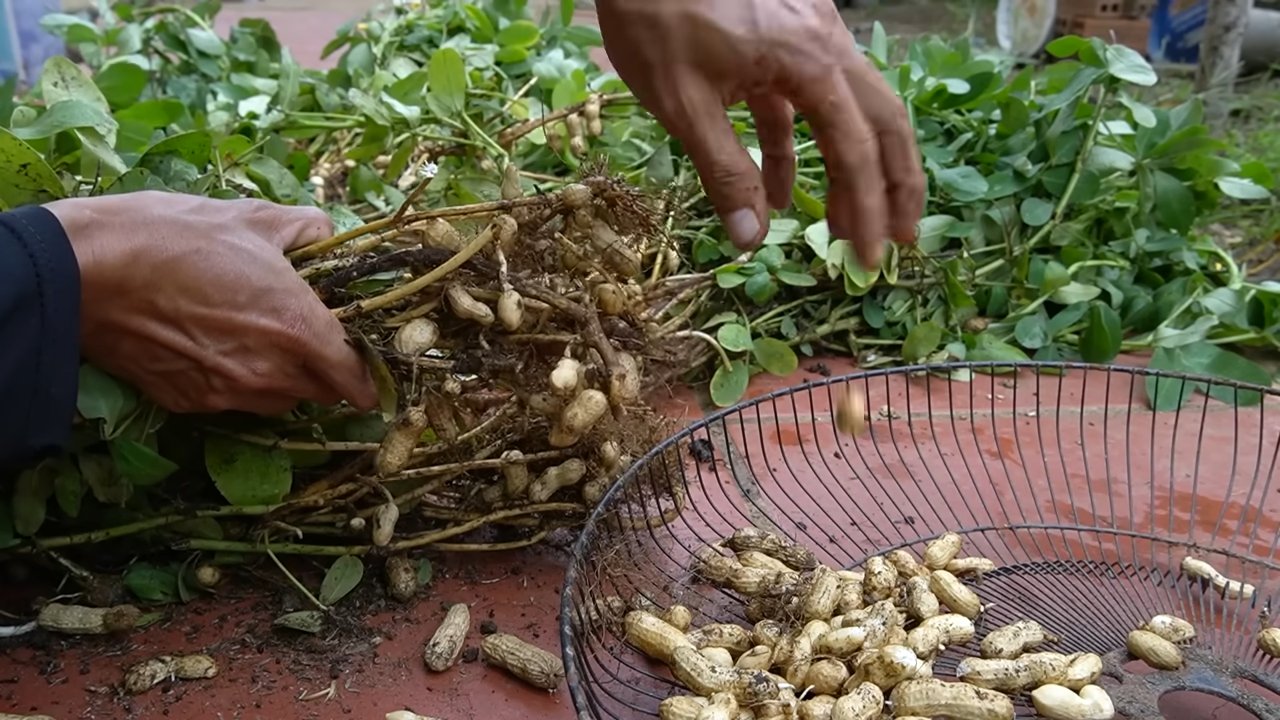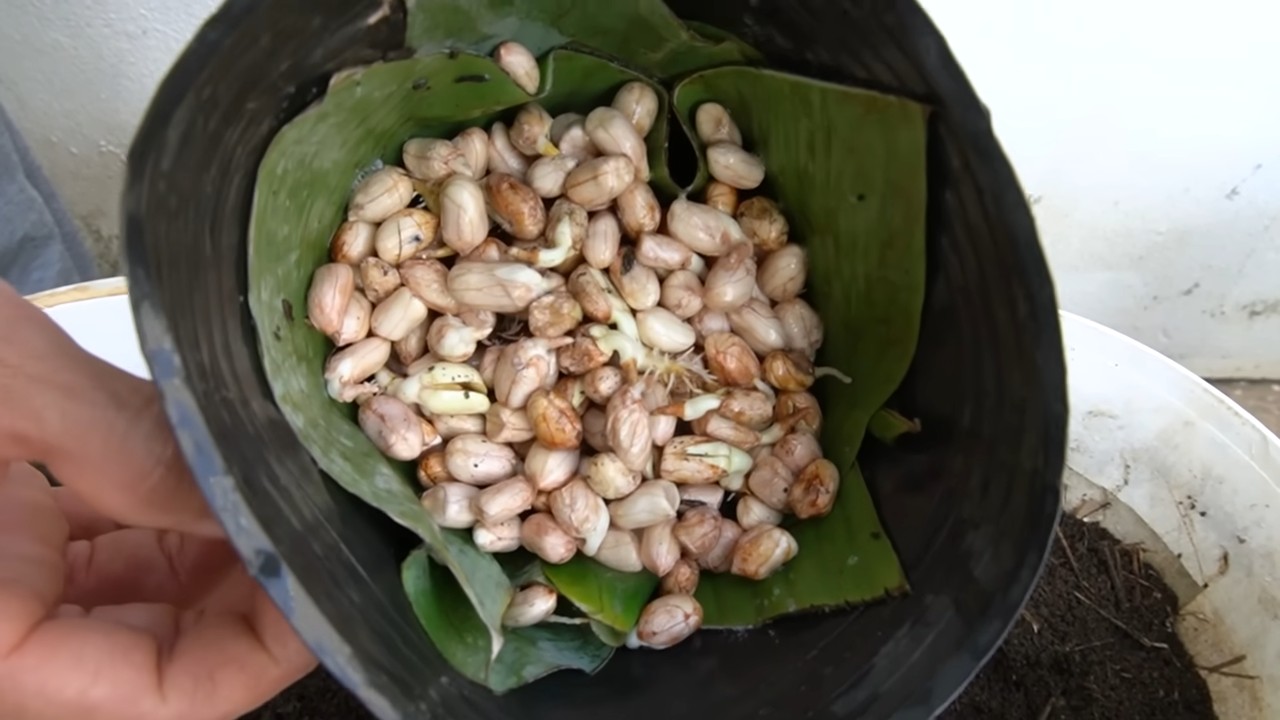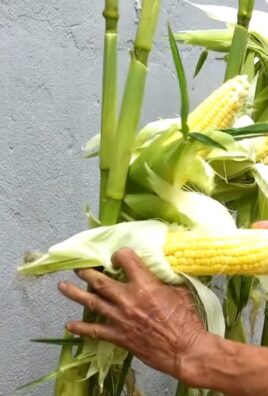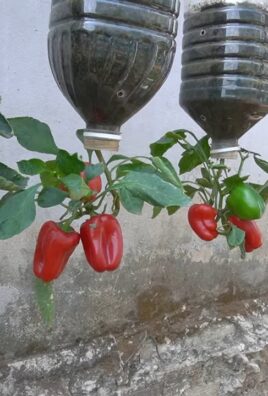Growing peanuts at home might sound like a whimsical dream reserved for sprawling farms, but I’m here to tell you it’s entirely achievable, even in a small garden or on a sunny balcony! Forget trekking to the grocery store for your peanut fix; imagine the satisfaction of harvesting your own homegrown bounty.
Peanuts, surprisingly, have a rich history, dating back thousands of years to South America. They weren’t just a snack; they were a vital source of protein and oil for ancient civilizations. Fast forward to today, and peanuts are a beloved staple worldwide. But why settle for store-bought when you can experience the joy of nurturing these little legumes from seed to snack?
This DIY guide is your passport to peanut-growing success. We’ll unlock the secrets to cultivating these unique plants, from understanding their quirky growth habits (did you know they bury their flowers to form peanuts?) to troubleshooting common problems. Growing peanuts at home offers a rewarding experience, connecting you to the earth and providing a delicious, healthy treat. Plus, it’s a fantastic conversation starter! So, grab your gardening gloves, and let’s get started on this nutty adventure!

Growing Peanuts at Home: A Beginner’s Guide
Hey there, fellow gardening enthusiasts! Ever thought about growing your own peanuts? It’s surprisingly easy and incredibly rewarding. Imagine the satisfaction of harvesting your own homegrown peanuts, perfect for snacking, making peanut butter, or adding to your favorite recipes. I’m going to walk you through the entire process, from choosing the right peanuts to harvesting your bounty. Let’s get started!
Choosing Your Peanut Variety
Before you even think about planting, you need to pick the right peanut variety for your climate and growing conditions. There are four main types:
* Virginia: These are the large, often roasted-in-the-shell peanuts you see at ball games. They need a long growing season (120-150 days).
* Spanish: These have smaller kernels and a reddish-brown skin. They’re often used in candies and peanut butter. They mature relatively quickly (110-120 days).
* Runner: This is the most commonly grown type in the US. They’re medium-sized and have a uniform shape, making them ideal for peanut butter. They also need around 120-130 days to mature.
* Valencia: These have three or more small kernels per shell and are known for their sweet flavor. They’re often roasted or boiled. They mature in about 90-110 days.
Important Tip: Choose a variety that suits your climate and the length of your growing season. If you live in a cooler climate with a shorter summer, Valencia or Spanish peanuts might be your best bet.
Preparing Your Peanut Planting Site
Peanuts need well-drained, sandy loam soil to thrive. They also need plenty of sunlight – at least 6-8 hours a day. Here’s how to prepare your planting site:
* Soil Testing: Before you do anything, test your soil’s pH. Peanuts prefer a slightly acidic soil, with a pH between 6.0 and 6.5. You can buy a soil testing kit at most garden centers or send a sample to your local agricultural extension office.
* Soil Amendment: If your soil is heavy clay or compacted, amend it with plenty of organic matter, such as compost, well-rotted manure, or peat moss. This will improve drainage and aeration.
* Fertilizing: Peanuts are legumes, which means they can fix nitrogen from the air. However, they still benefit from a balanced fertilizer. Use a fertilizer with a ratio of 5-10-10 (nitrogen, phosphorus, potassium) at planting time. Avoid over-fertilizing with nitrogen, as this can lead to excessive foliage growth and fewer peanuts.
* Weed Control: Clear the planting area of all weeds. Weeds compete with peanuts for nutrients and sunlight.
Planting Your Peanuts
Now for the fun part – planting! You can start peanuts indoors or directly sow them in the ground. I prefer direct sowing, as it avoids transplant shock.
1. Timing is Key: Wait until the soil temperature reaches at least 65°F (18°C) before planting. This is usually a couple of weeks after the last frost.
2. Preparing the Seeds: You can plant raw, unsalted peanuts directly from the grocery store, but make sure they are unroasted. I like to soak the peanuts in water for a few hours before planting to help them germinate faster.
3. Planting Depth and Spacing: Plant the peanuts about 1-2 inches deep and 6-8 inches apart in rows that are 2-3 feet apart.
4. Watering: Water the planting area thoroughly after planting. Keep the soil consistently moist until the seedlings emerge.
Caring for Your Peanut Plants
Peanuts are relatively low-maintenance plants, but they do need some care to thrive.
* Watering: Water regularly, especially during dry spells. Peanuts need about 1 inch of water per week. Avoid overwatering, as this can lead to fungal diseases.
* Weed Control: Keep the planting area free of weeds. You can use mulch to suppress weed growth.
* Hilling: When the peanut plants are about 6 inches tall, hill the soil around the base of the plants. This encourages the pegs (the stems that bear the peanuts) to penetrate the soil.
* Fertilizing: Side-dress the plants with a balanced fertilizer about 4-6 weeks after planting.
* Pest and Disease Control: Peanuts are generally pest-resistant, but they can be susceptible to certain diseases, such as leaf spot and white mold. If you notice any signs of disease, treat the plants with an appropriate fungicide.
Harvesting Your Peanuts
Harvesting is the most exciting part! Here’s how to know when your peanuts are ready to harvest:
1. Timing: Peanuts are usually ready to harvest in the fall, about 120-150 days after planting, depending on the variety.
2. Signs of Maturity: The leaves will start to turn yellow and the plants will begin to die back. You can also dig up a few plants to check the peanuts. The shells should be well-filled and the kernels should be plump and mature.
3. Digging: Use a garden fork or shovel to carefully dig up the peanut plants. Shake off the excess soil.
4. Curing: Hang the peanut plants upside down in a well-ventilated area for 2-4 weeks to cure. This allows the peanuts to dry and develop their flavor.
5. Threshing: Once the peanuts are cured, you can remove them from the plants. You can do this by hand or use a peanut thresher.
6. Drying: Spread the peanuts out in a single layer on a screen or tray and let them dry for a few more days.
7. Storage: Store the dried peanuts in an airtight container in a cool, dry place. They can be stored for several months.
Troubleshooting Common Peanut Growing Problems
Even with the best care, you might encounter some problems when growing peanuts. Here are some common issues and how to address them:
* Poor Germination: This can be caused by cold soil, poor-quality seeds, or overwatering. Make sure the soil temperature is warm enough before planting and use fresh, viable seeds. Avoid overwatering, as this can cause the seeds to rot.
* Yellowing Leaves: This can be caused by nutrient deficiencies, pests, or diseases. Check the soil pH and nutrient levels. Treat any pests or diseases as needed.
* Small Peanuts: This can be caused by poor soil, insufficient water, or a short growing season. Amend the soil with organic matter and water regularly. Choose a peanut variety that is suited to your climate and growing season.
* Pests: Aphids, spider mites, and nematodes can sometimes attack peanut plants. Use insecticidal soap or neem oil to control aphids and spider mites. Use a soil amendment to control nematodes.
* Diseases: Leaf spot and white mold are common peanut diseases. Use a fungicide to treat these diseases.
Enjoying Your Homegrown Peanuts
Now that you’ve harvested your peanuts, it’s time to enjoy them! Here are some ideas:
* Roasting: Roast the peanuts in the oven at 350°F (175°C) for 15-20 minutes, or until they are golden brown.
* Boiling: Boil the peanuts in salted water for 1-2 hours, or until they are tender.
* Making Peanut Butter: Grind the roasted peanuts in a food processor until they are smooth. Add salt and honey to taste.
* Snacking: Simply enjoy the peanuts as a healthy and delicious snack.
* Adding to Recipes: Use the peanuts in your favorite recipes, such as stir-fries, salads, and desserts.
Section: Advanced Peanut Growing Techniques
Want to take your peanut growing to the next level? Here are some advanced techniques to consider:
* Inoculation: Inoculating peanut seeds with nitrogen-fixing bacteria can improve nitrogen fixation and increase yields. You can purchase peanut inoculant at most garden centers.
* Cover Cropping: Planting a cover crop before planting peanuts can improve soil health and suppress weeds.
* Crop Rotation: Rotating crops can help prevent soilborne diseases and pests. Avoid planting peanuts in the same location year after year.
* Succession Planting: Planting peanuts in succession can extend the harvest season. Plant a new batch of peanuts every 2-3 weeks.
* Growing Peanuts in Containers: If you don’t have a garden, you can grow peanuts in containers. Use a large container with well-drained soil.
Section: Saving Peanut Seeds for Next Year
Saving your own peanut seeds is a great way to save money and ensure that you have a supply of seeds for next year.
1.

Conclusion
So, there you have it! Growing peanuts at home is not only achievable but also incredibly rewarding. From the initial wonder of planting a seemingly ordinary seed to the triumphant moment of harvesting your own homegrown peanuts, the entire process is a fascinating journey into the world of botany and self-sufficiency. This DIY trick transforms your garden into a miniature peanut farm, offering a unique and educational experience for gardeners of all ages and skill levels.
Why is this a must-try? Because it’s more than just growing a snack; it’s about connecting with the food you eat, understanding the life cycle of a plant, and experiencing the satisfaction of nurturing something from seed to harvest. Imagine the pride you’ll feel serving your own roasted peanuts to friends and family, knowing that you cultivated them with your own hands. Plus, homegrown peanuts often boast a fresher, more intense flavor than store-bought varieties.
But the fun doesn’t stop there! Feel free to experiment with different peanut varieties. Virginia peanuts, known for their large size, are perfect for roasting. Spanish peanuts, with their reddish skins, offer a sweeter flavor. Or try Valencia peanuts, which typically have three or four kernels per shell. Each variety brings its own unique characteristics to your homegrown peanut experience.
Consider also experimenting with different growing methods. While we’ve focused on growing peanuts directly in the ground, you can also try growing them in raised beds or even large containers. This is particularly useful if you have poor soil quality or limited garden space. Just ensure that your chosen container is deep enough to accommodate the developing peanut pods.
Furthermore, think about companion planting. Marigolds, for example, are known to deter nematodes, which can be a common pest for peanut plants. Basil can also help repel certain insects. Experimenting with companion plants can not only protect your peanut crop but also enhance the overall health and biodiversity of your garden.
Don’t be afraid to get your hands dirty and embrace the learning process. Growing peanuts at home may seem daunting at first, but with a little patience and attention, you’ll be amazed at what you can achieve. Remember to monitor your plants regularly, provide them with adequate water and sunlight, and protect them from pests and diseases.
We wholeheartedly encourage you to try this DIY trick and embark on your own peanut-growing adventure. And most importantly, we want to hear about your experiences! Share your successes, your challenges, and your tips with us and the wider gardening community. Post photos of your peanut plants, share your favorite peanut recipes, and let us know what you’ve learned along the way. Together, we can create a thriving community of homegrown peanut enthusiasts. So, grab some peanut seeds, get planting, and prepare to enjoy the delicious rewards of your own homegrown peanuts! This **DIY peanut growing** adventure is waiting for you!
Frequently Asked Questions (FAQ)
What kind of soil is best for growing peanuts?
Peanuts thrive in well-drained, sandy loam soil. This type of soil allows the peanut pegs (the structures that develop into peanut pods) to easily penetrate the ground. Avoid heavy clay soils, as they can compact and hinder pod development. If you have clay soil, amend it with plenty of organic matter, such as compost or well-rotted manure, to improve drainage and aeration. A slightly acidic to neutral soil pH (around 6.0 to 7.0) is ideal.
How much sunlight do peanut plants need?
Peanut plants require at least 6-8 hours of direct sunlight per day. Choose a sunny location in your garden where your plants will receive ample sunlight throughout the growing season. Insufficient sunlight can lead to weak growth and reduced peanut production.
How often should I water my peanut plants?
Water your peanut plants regularly, especially during dry periods. Aim to keep the soil consistently moist but not waterlogged. Water deeply and less frequently, rather than shallowly and more often, to encourage deep root growth. Avoid overhead watering, as this can increase the risk of fungal diseases. Drip irrigation or soaker hoses are excellent options for delivering water directly to the roots.
When is the best time to plant peanuts?
The best time to plant peanuts is after the last frost in spring, when the soil temperature has warmed to at least 65°F (18°C). Peanuts are warm-season crops and will not germinate or grow well in cold soil. In warmer climates, you may be able to plant peanuts earlier in the spring or even in late winter.
How long does it take for peanuts to mature?
Peanuts typically take 120-150 days to mature, depending on the variety and growing conditions. You’ll know your peanuts are ready to harvest when the foliage begins to yellow and the inside of the peanut shells are darkened and show distinct veins.
How do I harvest peanuts?
To harvest peanuts, carefully dig up the entire plant, being careful not to damage the peanut pods. Gently shake off any excess soil and allow the plants to dry in the sun for a few days. This process, called curing, helps to improve the flavor and texture of the peanuts.
How do I cure and store peanuts?
After drying the peanut plants in the sun for a few days, hang them upside down in a well-ventilated area for 2-3 weeks to allow the peanuts to fully cure. Once cured, you can remove the peanuts from the plants and store them in a cool, dry place. Shelled peanuts can be stored in the refrigerator or freezer for longer periods.
What are some common pests and diseases that affect peanut plants?
Common pests that can affect peanut plants include aphids, spider mites, and nematodes. Diseases include leaf spot, white mold, and peanut rust. Monitor your plants regularly for signs of pests or diseases and take appropriate action if necessary. Organic pest control methods, such as insecticidal soap or neem oil, can be effective for controlling many pests.
Can I grow peanuts in containers?
Yes, you can grow peanuts in containers, but you’ll need to choose a large container that is at least 18 inches deep and wide. Fill the container with well-draining potting mix and provide adequate sunlight and water. Container-grown peanuts may require more frequent watering and fertilization than those grown in the ground.
Are there different varieties of peanuts I can grow?
Yes, there are several different varieties of peanuts you can grow, each with its own unique characteristics. Some popular varieties include Virginia peanuts, Spanish peanuts, and Valencia peanuts. Virginia peanuts are known for their large size and are often used for roasting. Spanish peanuts have a reddish skin and a sweeter flavor. Valencia peanuts typically have three or four kernels per shell. Experiment with different varieties to find your favorite.




Leave a Comment